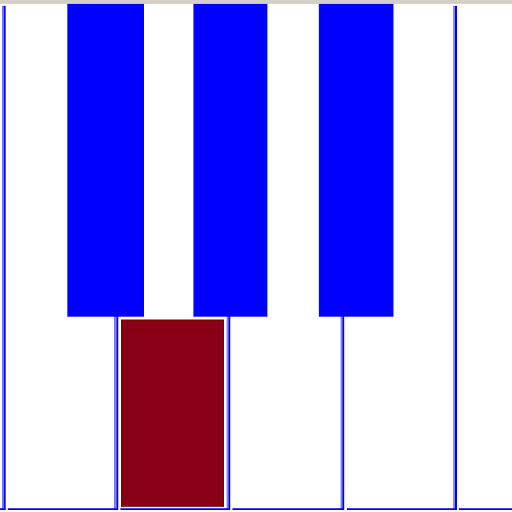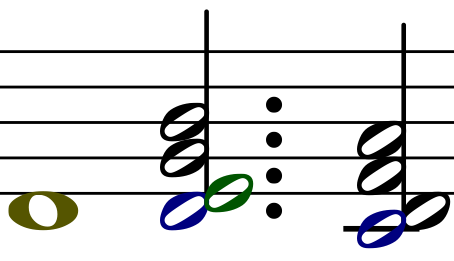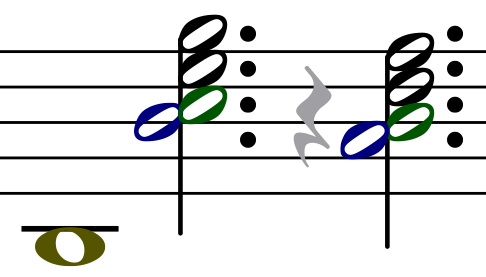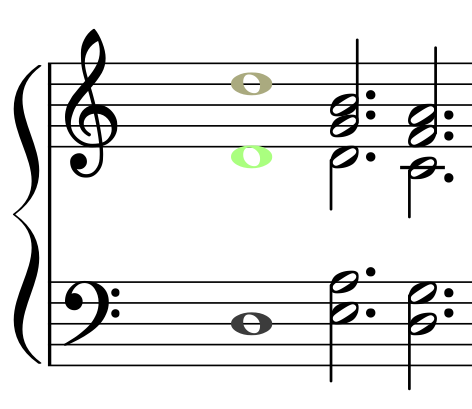

The basic chords of "So What?":
The basic first two chords are, in fact, two chords that are good for beginners to piano :
e-minor-7 and d-minor-7
... because the pitches are all on white keys.
Spelled-out, pitch-by-pitch, those notes are :
E + G + B + D and D + F + A + C

D+E + G + B and (move that down one whole-step, in-parallel to) : C+D + F + A

E+A in left hand and D + G+B in right handThink in terms of stacking _Fourths_ 'E' to 'A' is a 4th, so is: 'D' - 'G'
and, between the left hand thumb (on 'A') and right hand thumb (on 'D') is a 4th, as well.
That chord shape is an example of Quartal Harmony.
At top (between the 'G' and 'B') is a 3rd (Major-3rd, to be more precise).
Take that shape, and move it down a whole-step (to the neighboring white keys, to the left).
That's another example of parallel harmonic motion.
Read more about "So What?" on Wikipedia
John Coltrane's "Impressions" uses the same harmonic structure as Miles Davis's "So What?"
Dorian mode.
It uses the "III7" chord of dorian mode, in its piano riff (McCoy Tyner played this).
The tonal centre starts in 'D' , then moves (up a semi-tone / half-step) to _E-flat_ (which is the enharmonic equivalent of D# - but think of it as E- flat, not D-sharp).
So, in other words,
it goes from dorian mode in 'D', up to dorian mode in E-flat. and then back (and forth)
I read that Coltrane got some of the theme (in the "head") of "Impressions" from another composition"Morton Gould : Pavanne (from American Symphonette No. 2)"
You can hear the passage, in-question, starting at: https://youtu.be/HuOLCnehHBA?t=78 ( That jumps to 1m18s in the video. )
Notice how "Pavanne" modulates up a minor-third.
If "Pavanne" is transposed to the same key ('D' dorian mode) as Miles and Coltrane's pieces, then, that would mean:
From 'D'
, to :
'F'
(, as opposed to E-flat
, which is only a semi-tone / half-step
higher/above ).
In other words, that would be:
'D' dorian,
then up to :
'F' dorian mode.
But Pavanne's dorian-mode passage is actually in a different key,
one Perfect-Fourth higher: 'G'
so that means:
In other words, that would be:
'G' dorian, then up to
"B-flat" dorian mode.
Starts with the i7, ii7, and III7 chords.
And then includes a dominant-7th chord, based upon degree #4 of dorian mode (scale).
III7, IV(dominant7) and v7 (That last chord is a minor-seventh chord.)
Please listen to Rocky Boyd's why not, which was recorded on march '61.. Coltrane recorded impressions in december '61
So, "Why Not?" by Rocky Boyd.
I googled "Gil Evans chord" (or, "Gil-Evans-chord" -- with dashes between each word in the search query)
and found many results, which I haven't had time to read through yet,
but I read this thread on Talk Bass dot-com.
Next Step: "Santiago" by Dedalus (and other compositions/jams, with the same kind of harmonic idea.)
back to Free Instructional Materials
| back to homepage |